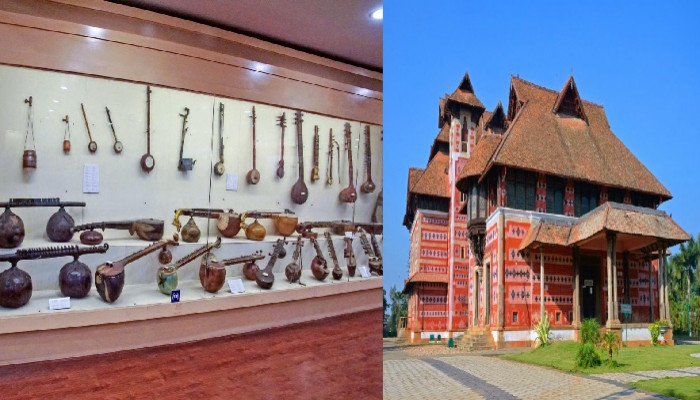Why India Needs Dharmic Museums Now
- In History & Culture
- 10:38 PM, Jul 30, 2025
- Swetha Iyer
Preserving the Past Without Stripping Its Soul
Museums, for many in the Hindu worldview, have long been viewed with unease, particularly when it comes to housing sacred sculptures and idols. There is a valid concern: should deities, once venerated in temples, be confined behind glass walls as objects of study or admiration? Is it not a form of quiet desacralisation?
But perhaps there’s room for a parallel thought—one that is not in opposition to tradition but works alongside it. In an age where the rediscovery of India’s glorious past is finally gaining momentum, could thoughtfully curated dharmic museums become a bridge between reverence and relevance?
Across India, ancient sculptures, carved Stambhs & Stupas, ornamental pieces, statues of saints and temple remnants are being unearthed almost every week from excavation sites, abandoned shrines, or during civic works. Many are in fragments or disrepair. Many are alankara murtis (decorative idols) not intended as main deities, yet masterpieces of Indic art.
According to Hindu traditions, once an idol is broken or disfigured, it is no longer deemed fit for worship. However, that does not mean it is devoid of value. If anything, these remains are civilisational signatures and quiet reminders of a time when sculptural precision met spiritual depth.
Instead of leaving them to crumble in neglected corners or shipping them to anonymous storage, we can consider a new path. A network of Dharmic Museums that are not just art galleries, but immersive spaces that offer cultural context, scriptural references, architectural insights, and interactive experiences for today’s generation.
Dharmic Museums as Civilisational Anchors: Why We Need This Now
India is undergoing rapid infrastructural transformation. Entire cities are being rebuilt, roads expanded, and new corridors laid. In the process, countless archaeological finds from temple fragments, murtis, to ornamental panels are being unearthed. These aren’t just pieces of stone. They are remnants of a civilisational story waiting to be told. In the rush for modernisation, these precious discoveries risk being pushed into cold storage, forgotten archives, or worse, discarded. Instead, they deserve to be preserved, interpreted, and shared so they become anchors of identity for future generations.
- Revival Without Replication: Not every town or city will see a temple revival, but they could house a museum that serves as a tribute to the local or regional heritage. These can display regional styles in sculpture, temple layouts, inscriptions, and more.
- Employment & Revenue: These institutions can create skilled jobs, from conservation to curation, and foster local tourism in smaller towns and tier-2 cities. With India's growing middle class seeking meaningful travel experiences, such cultural centres can become new focal points.
- Educational Impact: Imagine a schoolchild from Jharkhand or Kanchipuram walking through a gallery that shows the evolution of iconography or temple-building techniques from the 6th century to today, with regional scripts, stories and tools explained in simple terms. It’s not just a lesson in history; it’s a cultural grounding.
- Spiritual Awareness Without Sectarianism: A dharmic museum honours our traditional past. It can introduce the young to India's civilisational ethos without the filter of Western anthropological frameworks. These can co-exist with temples, not replace them.
- Preservation of Fragments: With many sculptures unearthed in incomplete or damaged form, creating spaces to restore and display them is both respectful and necessary. A museum allows them to be seen, studied, and appreciated without violating the traditions around worship.
Beyond Worship: Sacred, but Not Forgotten
The Chola bronzes now displayed in museums across the world continue to inspire awe for their craftsmanship. Closer home, the Government Museum in Chennai houses hundreds of temple fragments. Yet many lie in storage due to a lack of space or curation. Recent excavations in Telangana and Tamil Nadu have unearthed temple walls, inscriptions, and decorative pieces that are fragile and need proper conservation.
To Indians, the unearthed murti is not debris, but it is a fragment of lived history, once touched by our ancestors. Instead of dispersing them to general museums or letting them deteriorate, Dharmic Museums focus on regional heritage, can offer a tailored and respectful environment.
A Call to Policy Makers and Institutions
What is needed is not merely state funding but a model of collaboration between archaeological departments, private foundations, local historians, temple trusts, and design experts. These museums can be built using traditional architecture and even double up as learning centres for sculpture, Sanskrit, or temple arts.
There is no need to pit temple restoration against museum creation. The two can go hand in hand—where the temple is a living place of worship, and the museum a centre of remembrance, pride, and learning.
At a time when India is reclaiming its civilisational narrative, creating a network of Dharmic Museums is not just an act of preservation. It is an investment in the cultural capital of future generations.







Comments